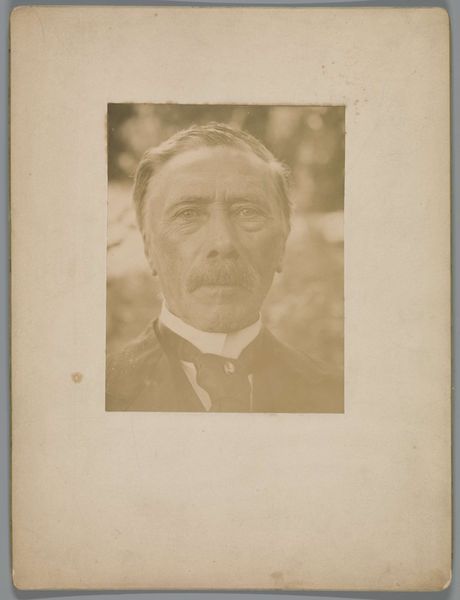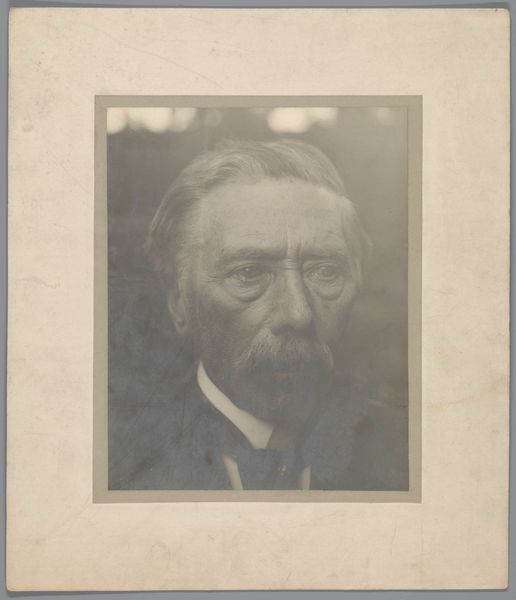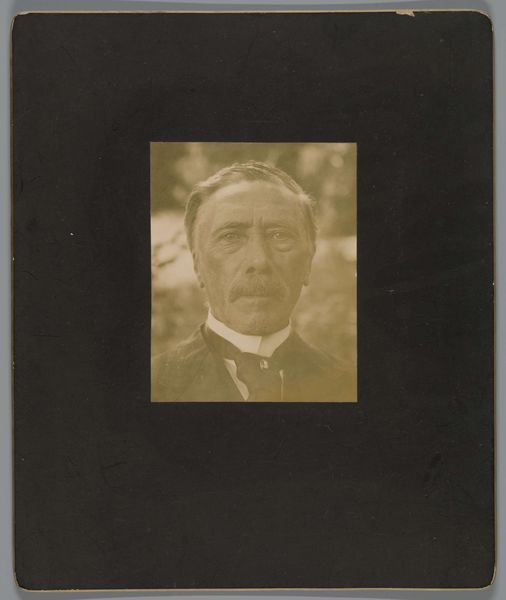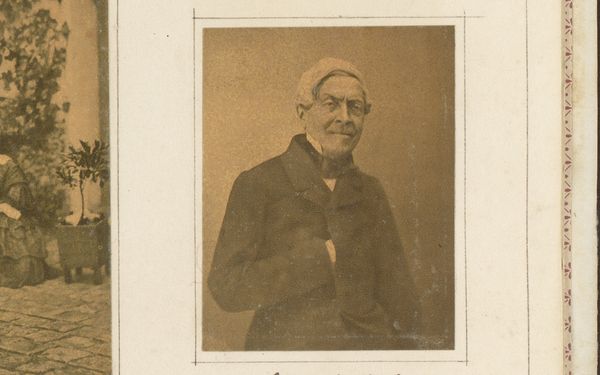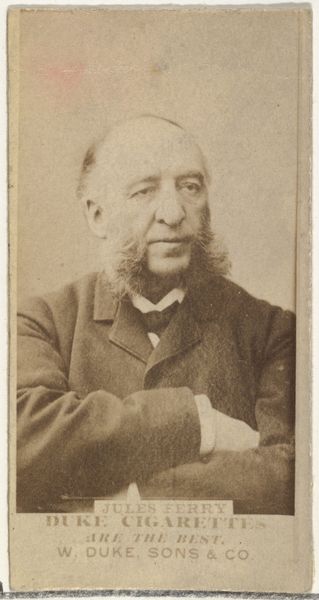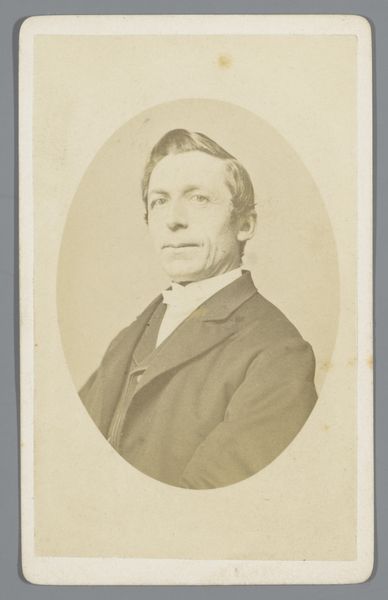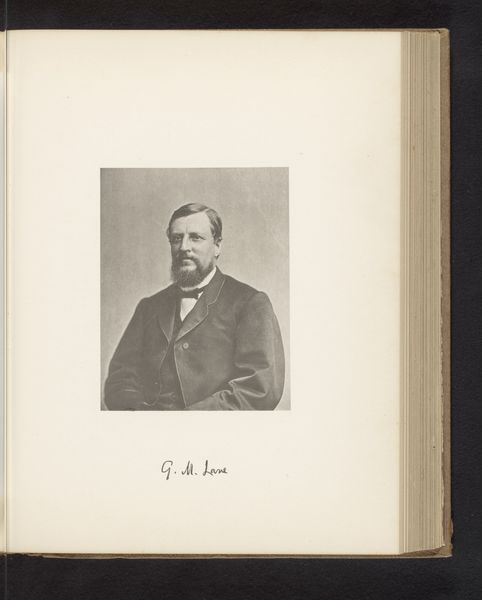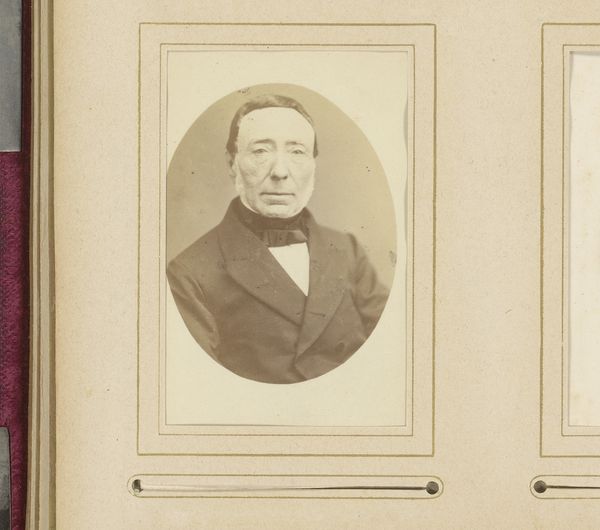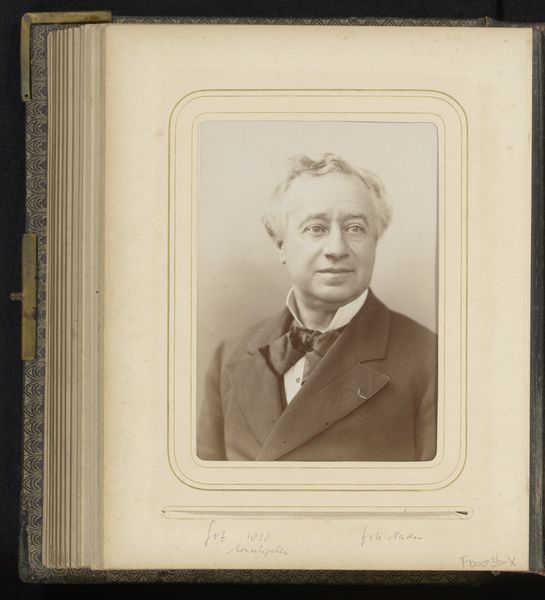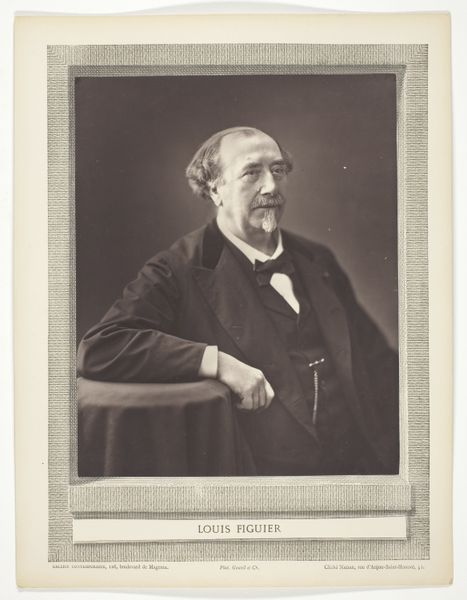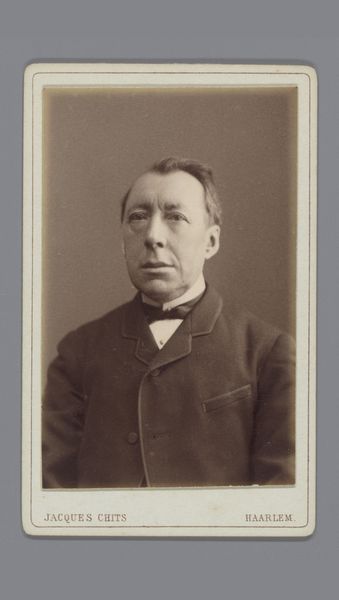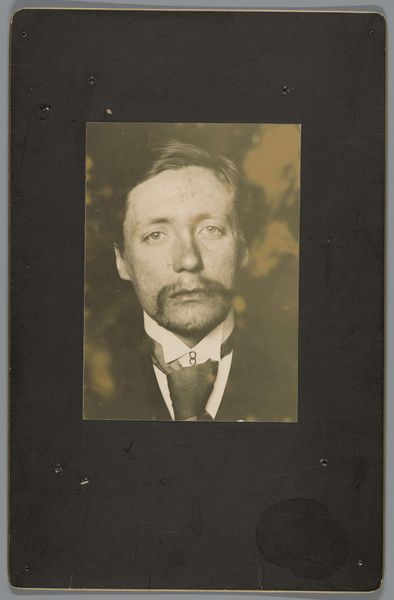
photography, gelatin-silver-print
#
portrait
#
aged paper
#
toned paper
#
self-portrait
#
muted colour palette
#
impressionism
#
photography
#
gelatin-silver-print
#
watercolor
Dimensions: height 137 mm, width 102 mm, height 238 mm, width 199 mm
Copyright: Rijks Museum: Open Domain
Editor: Here we have "J.J. Witsen," a gelatin-silver print dating from around 1860 to 1915. The tones are beautiful but faded. It's quite a direct portrait. How do you interpret this work in light of the social context of the time? Curator: This portrait speaks volumes about the power dynamics inherent in representation, even within a self-portrait. Willem Witsen, positioned as both subject and author, wields control, but it is control informed by the norms of his era – the gaze he directs back at the viewer is one framed by class and masculinity. Do you notice anything about the photographic process itself, and how it reflects the rapidly shifting social landscape of the late 19th century? Editor: I see that the sepia tones and aged paper suggest a longing for the past, but his forward stare seems pretty modern and assertive. Curator: Precisely. And who was photography accessible to at this time? Think about the burgeoning middle class and the democratization of image-making. How might Witsen be consciously crafting his image in response to, or in defiance of, those shifting tides? It’s crucial to understand this portrait, not just as an image of an individual, but as a complex negotiation of identity within a specific historical moment, including gender. The formality, the composition…it’s all a statement, isn't it? Editor: Definitely. I never thought about photography itself being part of a power play, about who is behind the camera and how it reflects societal shifts. Curator: Art provides the lens through which we critically examine such negotiations. The beauty of this portrait lies in its capacity to invite us to question those norms and challenge the historical narratives of which art and images are complicit. What new questions does the work raise for you?
Comments
No comments
Be the first to comment and join the conversation on the ultimate creative platform.
